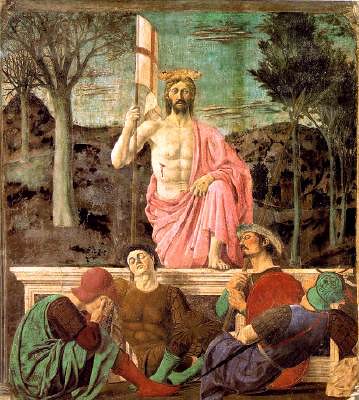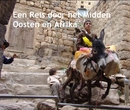Biblical inconsistencies
This is one of the most famous paintings of one of my favourite painters, Piero della Francesca, who we got to know when visiting our house in Tuscany, in Tontenano in the Province of Arezzo. This painting can be found in the Pinoteca Comunale in Sanseplocro, where Piero spent most of his life. It can be seen for free from the street by looking through the window of the museum.
Tomorrow is Ascension Day, the day which Christians celebrate the ascension of Christ to heaven. There is not a lot said about the Ascension in the bible and the day has been chosen as it is 40 days after the Resurrection. 40 days, being an ancient magic number, used many times in Judaeo/Christian mythology. Its origin may relate to the cycle of Venus with respect to the earth - where there are five movements each lasting eight years, mapped out in the shape of a star.
Anyway, I had a look at what the gospels had to say about the discovery of the empty tomb, after Christ had bene resurrected. Our friend on the Real Da Vinci Code programme had mentioned the presence of Mary Magdalene and the angel at the tomb. Well this is what they say:
Matthew: Mary of Magdala and the other Mary, early Sunday morning,violent erthquake, angel descended from heaven and roilled away the stone, angel's face shone like lightning and garments as white as snow
Mark: after sunrise, Mary of Magdala, from whom Jesus had cast seven devils and Mary, mother of James, stone had already bene rolled back, saw a youth sitting on the right hand side, wearing a white robe.
Luke: very early, the women who had accompanies Jesus from Galilee, stone already rolled away, no body, suddenly two men in dazzling garments were at their side
John: early, while it was still dark, Mary of Magdala, stone had been moved away, she runs away to Simon Peter and the other disciple, the one whom Jesus loved, they (the men) had a look, saw nothing and went away, Mary stayed outside and saw two angels sitting there, one at the head and one at the feet.
Great stories, all of them. Necessary to create the drama of the resurrection, but all different versions of the same myth. Nothing wrong with this, if we all accept that the Bible stories are myths and have a deeper meaning than the pure literal meaning presented. The Roman church pushed the literal understanding of the Bible stories at the cost of the spiritual meaning, as it was easier to control people's thoughts and actions in this way. Such inconsistencies in one simple story such as this show what a nonsense it is to maintain this literalist approach.
I find it also odd that there are so few representations in art of the discovery of the empty tomb. Maybe artists were confused about the varying versions of the same story. Maybe too they were worried about the fact that it was the women who discovered the empty tomb and it was Mary Magdalene, of all people, whom Jesus chose to first reveal himself after his resurrection. This gives Mary, and therefore womenkind, an importnace, which maybe the Church was keen to suppress. And is STILL keen to suppress.





0 Comments:
Post a Comment
<< Home